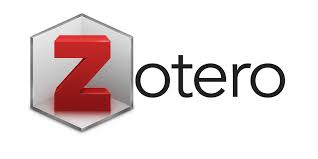Pemahaman Konsep Matematika Siswa Madrasah Tsanawiyah pada Statistika Ditinjau dari Gaya Belajar
DOI:
https://doi.org/10.29240/ja.v5i1.6865Keywords:
Concept understanding, Statistics, Learning styleAbstract
Understanding the concept is essential in learning mathematics, where it is possible to have different achievements based on the characteristics of students' learning styles. Therefore, this study wants to describe the ability to understand mathematical concepts in terms of students' learning styles. This qualitative research was conducted at MTs Negeri 2 Semarang. Of the 31 grade VIII students at the school, it was found that 42% had a visual learning style, 32% had an auditory learning style, and 26% had a kinesthetic learning style. Furthermore, research subjects were selected purposively based on mapping learning styles, and six students were obtained. Data collection techniques used learning style questionnaires, concept comprehension tests, and interviews. Data analysis techniques use interactive models and check the validity of the data using triangulation. Research data management and analysis using Nvivo software. The results showed no significant difference in conceptual understanding between subjects with visual, auditory, and kinesthetic learning styles. The six subjects can do the test correctly and have been confirmed through interviews. However, the two visual learning style subjects cannot show the location of the mean, median, and mode of data presented in the diagram. This finding suggests that teachers should emphasize using various mathematical representations in student learning.
Downloads
References
Anisa, R. N., Ruswana, A. M., & Zamnah, L. N. (2021). Analisis Kemampuan Pemahaman Konsep Matematis Peserta Didik SMP pada Materi Aljabar. J-KIP, 2(3), 237–242. https://doi.org/10.25157/j-kip.v2i3.6271
Arifin, S., & Aprisal, A. (2020). Analisis Tingkat Pemahaman Konsep Statistika Mahasiswa Calon Guru Menggunakan Two Tier Test Berbasis Online. Delta : Jurnal Ilmiah Pendidikan Matematika, 8(2), 201–208. https://doi.org/10.31941/delta.v8i2.1059
Baharun, H., & Adhimiy, S. (2018). Curriculum Development Through Creative Lesson Plan. Cendekia, 16(1), 41–62. https://doi.org/10.21154/cendekia.v16i1.1164
Bahiyyah, S. F., Indiati, I., & Sutrisno, S. (2021). Analisis Kesalahan Siswa SMP dalam Menyelesaikan Soal Literasi Matematika Berdasarkan Metode Newman Ditinjau dari Kemandirian Belajar. Aksioma : Jurnal Matematika dan Pendidikan Matematika, 12(3), 436–446. https://doi.org/https://doi.org/10.26877/aks.v12i3.9067
Bandur, A. (2016). Penelitian Kualitatif-Metodologi, Desain dan Teknik Analisis Data dengan Nvivo 11 Plus. Jakarta: Mitra Wacana Media.
Cai, P., Zou, K., Deng, X., Wang, B., Zheng, M., Li, L., … Ji, X. (2021). Comprehensive Understanding of Sodiumâ€Ion Capacitors: Definition, Mechanisms, Configurations, Materials, Key Technologies, and Future Developments. Advanced Energy Materials, 11(16), 2003804. https://doi.org/10.1002/aenm.202003804
Daimaturrohmatin, D., & Rufiana, I. S. (2019). Analisis Kemampuan Komunikasi Matematis Siswa Ditinjau dari Gaya Belajar Kolb. Edupedia, 3(1), 17. https://doi.org/10.24269/ed.v3i1.232
Hasna, S., Firdaus, A. R., Dewi, D. A., & Furnamasari, Y. F. (2021). Strategi Guru dalam Menumbuhkan Jiwa Nasionalisme Peserta Didik melalui Pembelajaran PKn. Edukatif : Jurnal Ilmu Pendidikan, 3(6), 4970–4979. https://doi.org/10.31004/edukatif.v3i6.1570
Herawaty, D., Widada, W., Umam, K., Nugroho, Z., Falaq, A., & Anggoro, D. (2019). The Improvement of the Understanding of Mathematical Concepts through the Implementation of Realistic Mathematics Learning and Ethnomathematics. ICETEP. https://doi.org/10.2991/icetep-18.2019.6
Herwandi, H., & Kaharuddin, A. (2020). Exploration of the Influence of Learning ELPSA (Experiences, Language, Pictures, Symbols, and Applications) on the Understanding of Mathematical Concepts. Indonesian Journal of Instructional Media And Model, 2(2), 113–125. https://doi.org/10.32585/ijimm.v2i2.926
Hidayati. (2019). Analisis Kemampuan Koneksi Matematis Siswa SMP dalam Menyelesaikan Masalah Sistem Linear Dua Variabel ditinjau dari Gaya Belajar (Universitas Islam Majapahit). Universitas Islam Majapahit. Retrieved from http://repository.unim.ac.id/1062/
Huda, S., Firmansyah, M., Rinaldi, A., Suherman, S., Sugiharta, I., Astuti, D. W., … Prasetiyo, A. E. (2019). Understanding of Mathematical Concepts in the Linear Equation with Two Variables: Impact of E-Learning and Blended Learning Using Google Classroom. Al-Jabar : Jurnal Pendidikan Matematika, 10(2), 261–270. https://doi.org/10.24042/ajpm.v10i2.5303
Husna, I., Purwosetiyono, F. D., & Endahwuri, D. (2020). Kemampuan Pemahaman Matematis Siswa dalam Memecahkan Masalah Trigonometri Ditinjau dari Kemampuan Matematika. Imajiner: Jurnal Matematika dan Pendidikan Matematika, 2(6), 501–509. https://doi.org/10.26877/imajiner.v2i6.6787
Irbah, D. A., Kusumaningsih, W., & Sutrisno, S. (2018). Analisis Kemampuan Berpikir Kreatif Matematis Ditinjau dari Gaya Belajar Siswa. Media Penelitian Pendidikan : Jurnal Penelitian dalam Bidang Pendidikan dan Pengajaran, 12(2), 115–127. https://doi.org/10.26877/mpp.v12i2.3829
Jihad, A., & Abdul, H. (2015). Evaluasi Pembelajaran. Yogyakarta: Multi Presindo.
Juniasani, A., Sutrisno, S., & Pramasdyahsari, A. S. (2022). Mathematical Communication Skills of Junior High School Students with High Mathematical Resilience on Opportunity Materials. Journal of Medives : Journal of Mathematics Education IKIP Veteran Semarang, 6(1), 11. https://doi.org/10.31331/medivesveteran.v6i1.1796
Khanifah, K., Sutrisno, S., & Purwosetiyono, F. D. (2019). Literasi Matematika Tahap Merumuskan Masalah Secara Matematis Siswa Kemampuan Tinggi dalam Memecahkan Masalah Matematika Kelas VIII. JKPM (Jurnal Kajian Pendidikan Matematika), 5(1), 37. https://doi.org/10.30998/jkpm.v5i1.4544
Khoirunnisa, A., & Soro, S. (2021). Analisis Kemampuan Pemahaman Konsep Matematis pada Materi SPLDV Ditinjau dari Gaya Belajar Peserta Didik. Jurnal Cendekia : Jurnal Pendidikan Matematika, 5(3), 2398–2409. https://doi.org/10.31004/cendekia.v5i3.869
Marsudi, A. S., Lestari, M. P., & Hidayati, N. (2021). The Use of YouTube Social Media in the Covid19 Pandemic to Improve Understanding of Mathematical Concepts. Turkish Journal of Computer and Mathematics Education, 12(13), 6327–6333. Retrieved from https://turcomat.org/index.php/turkbilmat/article/view/9921
MartÃn-Fernández, E., Ruiz-Hidalgo, J. F., & Rico, L. (2019). Meaning and Understanding of School Mathematical Concepts by Secondary Students: The Study of Sine and Cosine. Eurasia Journal of Mathematics, Science and Technology Education, 15(12). https://doi.org/10.29333/ejmste/110490
Moleong. (2013). Metodologi Penelitian Kualitatif. Bandung: Remaja Roesdakarya.
Muhtarom, M., Murtianto, Y. H., & Sutrisno, S. (2017). Thinking Process of Students with High-Mathematics Ability (A Study on QSR NVivo 11-Assisted Data Analysis). International Journal of Applied Engineering Research, 12(17), 6934–6940. Retrieved from https://www.ripublication.com/ijaer17/ijaerv12n17_84.pdf
Puspitasari, P., & Ratu, N. (2019). Deskripsi Pemahaman Konsep Siswa dalam Menyelesaikan Soal PISA pada Konten Space and Shape. Mosharafa : Jurnal Pendidikan Matematika, 8(1), 155–166. https://doi.org/10.31980/mosharafa.v8i1.431
Putri, F. E., Amelia, F., & Gusmania, Y. (2019). Hubungan Antara Gaya Belajar dan Keaktifan Belajar Matematika Terhadap Hasil Belajar Siswa. Edumatika : Jurnal Riset Pendidikan Matematika, 2(2), 83–88. https://doi.org/10.32939/ejrpm.v2i2.406
Rismawati, M., & Hutagaol, A. S. R. (2018). Analisis Kemampuan Pemahaman Konsep Matematika Mahasiswa PGSD STKIP Persada Khatulistiwa Sintang. Jurnal Pendidikan Dasar Perkhasa: Jurnal Penelitian Pendidikan Dasar, 4(1), 91–105. https://doi.org/10.31932/jpdp.v4i1.17
Rizaldi, D. R., Makhrus, M., & Doyan, A. (2019). Analisis Tingkat Kemampuan Berpikir Kritis dengan Model Perubahan Konseptual Ditinjau dari Gaya Belajar Siswa. Jurnal Pendidikan Fisika dan Teknologi, 5(1), 74–81. https://doi.org/10.29303/jpft.v5i1.794
Siki, D., Djong, K. D., & Jagom, Y. O. (2021). Profil Pemahaman Konsep Matematika Siswa SMP dalam Menyelesaikan Masalah Matematika. Leibniz : Jurnal Matematika, 1(1), 36–43. https://doi.org/10.59632/leibniz.v1i1.55
Suharto, S., & Widada, W. (2019). The Cognitive Structure of Students in Understanding Mathematical Concepts. ICEtep, 295, 65–69. https://doi.org/10.2991/icetep-18.2019.16
Susanto, A., Kustati, M., & Yusna. (2020). Kontribusi Model Pembelajaran Student Teams Achievement Division dalam Pemahaman Konsep Matematis. Global Conferences Series:Social Sciences, Educationand Humanities (GCSSSEH), 6, 1–6. Retrieved from https://series.gci.or.id/assets/papers/icftk-2019-424.pdf
Sutrisno, S., Nida, R. Q., & Purwosetiyono, F. X. D. (2023). Student Academic Fraud during Maths Exams during the Covid- 19 Pandemic Based on GONE Theory Dimensions. Formatif: Jurnal Ilmiah Pendidikan MIPA, 13(1), 17–32. https://doi.org/10.30998/formatif.v13i1.13908
Sutrisno, S., Sudargo, S., & Titi, R. A. (2019). Analisis Kemampuan Representasi Matematis Siswa SMK Kimia Industri Theresiana Semarang. JIPMat (Jurnal Ilmiah Pendidikan Matematika), 4(1), 65–76. https://doi.org/10.26877/jipmat.v4i1.3626
Tiumlafu, N., Babys, U., & Bien, Y. I. (2022). Analisis Kemampuan Komunikasi Matematis Siswa Ditinjau dari Gaya Belajar. MATH-EDU: Jurnal Ilmu Pendidikan Matematika, 7(1), 1–10. https://doi.org/10.32938/jipm.7.1.2022.1-10
Tonda, A. F., Suwanti, V., & Murniasih, T. R. (2020). Analisis Kesalahan Konsep Matematika Siswa dalam Menyelesaikan Soal Operasi Aljabar Berdasarkan Gaya Belajar. Jurnal Silogisme, 5(1), 19–24. https://doi.org/10.24269/silogisme.v5i1.2537
Turmuzi, M., Kurniati, N., & Azmi, S. (2021). Pemahaman Konsep Matematis Mahasiswa Calon Guru Sekolah Dasar Ditinjau dari Gender dan Gaya Belajar. EDU-MAT: Jurnal Pendidikan Matematika, 9(1), 25. https://doi.org/10.20527/edumat.v9i1.10371
Ulfa, M., & Puspaningtyas, N. D. (2020). The Effectiveness of Blended Learning Using A Learning System in Network (SPADA) in Understanding of Mathematical Concept. Matematika dan Pembelajaran, 8(1), 47–60. https://doi.org/10.33477/mp.v8i1.1280
Wibowo, F. A. N., Murtianto, Y. H., & Sutrisno, S. (2023). Kemampuan Pemecahan Masalah pada Soal Literasi Matematika Berdasarkan Teori Polya Ditinjau dari Gaya Kognitif. JKPM (Jurnal Kajian Pendidikan Matematika), 8(1), 133. https://doi.org/10.30998/jkpm.v8i1.14064
Yana, A. U., Antasari, L., & Kurniawan, B. R. (2020). Analisis Pemahaman Konsep Gelombang Mekanik Melalui Aplikasi Online Quizizz. Jurnal Pendidikan Sains Indonesia, 7(2), 143–152. https://doi.org/10.24815/jpsi.v7i2.14284
Young, A. G., & Shtulman, A. (2020). How Children’s Cognitive Reflection Shapes Their Science Understanding. PMC, 11(June), 1–8. https://doi.org/10.3389/fpsyg.2020.01247
Yudha, A., Sufianto, S., Damara, B. E. P., Taqwan, B., & Haji, S. (2019). The Impact of Contextual Teaching and Learning (CTL) Ability in Understanding Mathematical Concepts. ICETeP, 295, 170–173. https://doi.org/10.2991/icetep-18.2019.42
Yulianty, N. (2019). Kemampuan Pemahaman Konsep Matematika Siswa dengan Pendekatan Pembelajaran Matematika Realistik. Jurnal Pendidikan Matematika Raflesia, 4(1), 60–65. https://doi.org/10.33449/jpmr.v4i1.7530
Downloads
Published
Issue
Section
Citation Check
License
Authors who publish with ARITHMETIC: Academic Journal of Math agree to the following terms:
- Authors retain copyright and grant the journal right of first publication with the work simultaneously licensed under a Creative Commons Attribution-NonCommercial-ShareAlike 4.0 International License (CC BY-NC-SA 4.0) that allows others to share the work with an acknowledgment of the work's authorship and initial publication in this journal.
- Authors are able to enter into separate, additional contractual arrangements for the non-exclusive distribution of the journal's published version of the work (e.g., post it to an institutional repository or publish it in a book), with an acknowledgment of its initial publication in this journal.
- Authors are permitted and encouraged to post their work online (e.g., in institutional repositories or on their website) prior to and during the submission process, as it can lead to productive exchanges, as well as earlier and greater citation of published work (See The Effect of Open Access).







